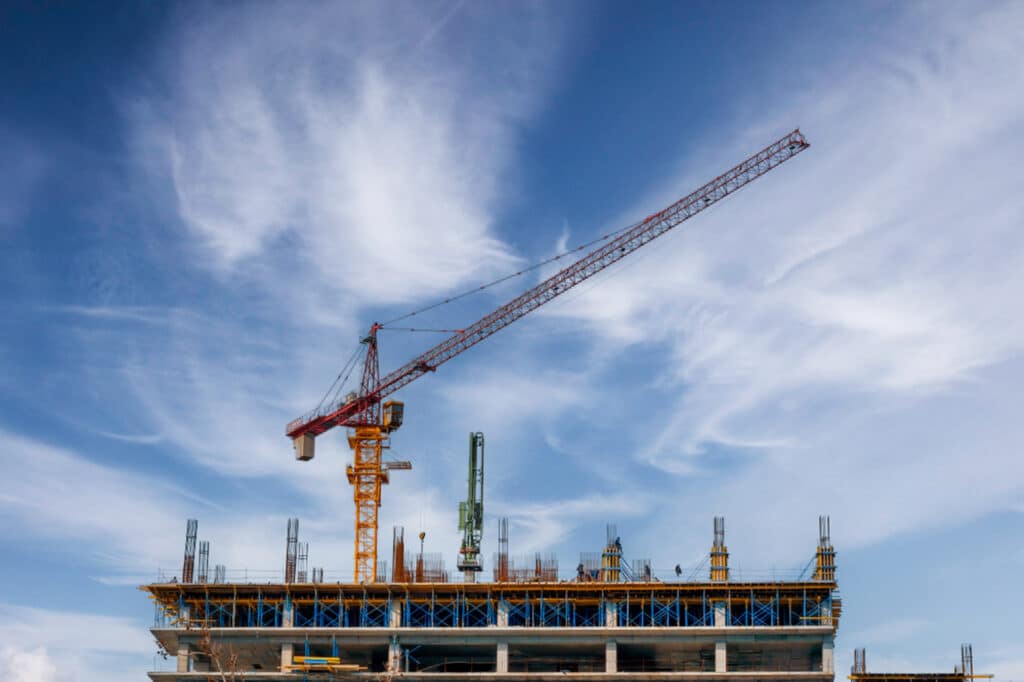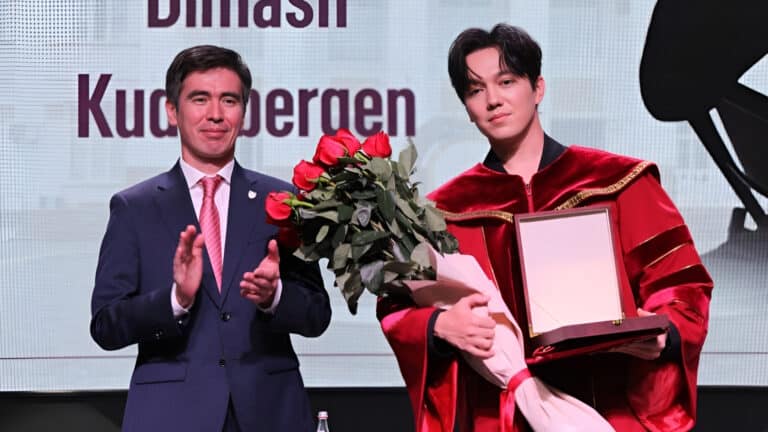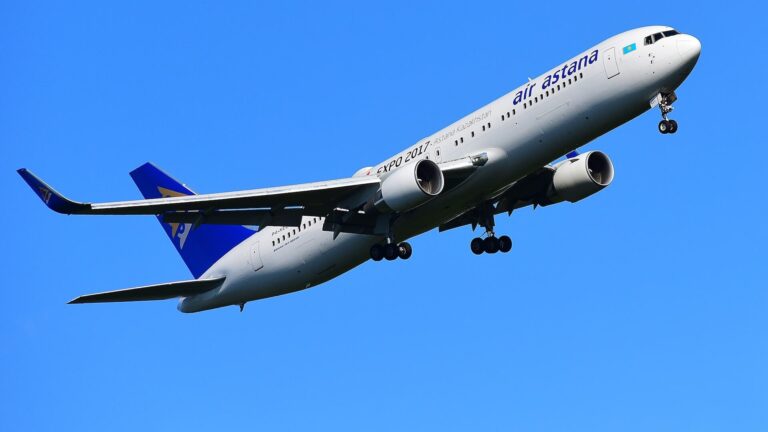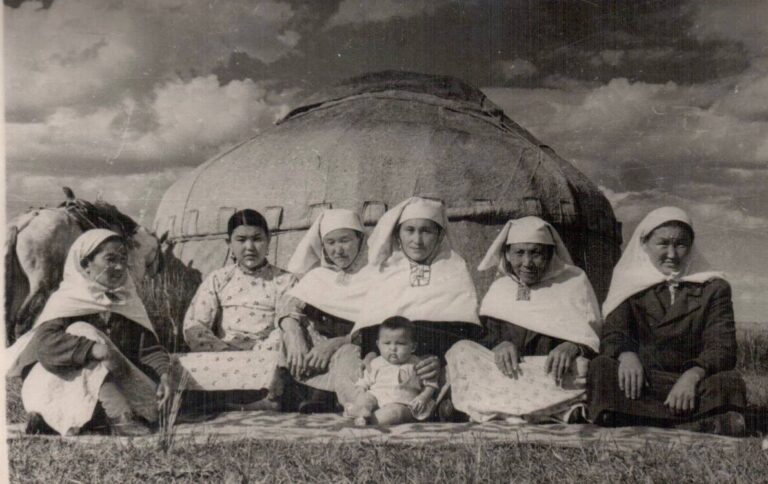What segments of the real estate market in Kazakhstan and Uzbekistan have attracted foreign investors? And what yield are they hoping to obtain?

«If you have several million dollars, you have the chance to make a deal with a developer and buy an entire floor with ten apartments in an apartment building. This is a good diversification beyond the Western world. If we are talking about investments in real estate, I’d prefer to have ten one-room apartments in Kazakhstan than a studio in Paris with a floor size of 20 square meters. However, if your net capital is less than $2 million and you can afford to buy only several apartments in Kazakhstan for your portfolio, investing in this market makes no sense,» said Ladislav Maurice, an international investor and investment consultant.
Foreign investors consider developing markets like Kazakhstan and Uzbekistan as opportunities to diversify their capital and gain higher yields by acquiring real estate from markets that are not attractive to many. There are various obstacles, such as administrative barriers, imperfect legislation and foreign currency risks, that foreign investors have to deal with if they choose this path. As a result, the actual yield doesn’t meet expectations.
What are the limitations for investors and how to evade them?
Unlike real estate markets in Turkey, the UAE, Thailand and Europe, where retail investors are buying tens of thousands of houses and apartments annually, the real estate market in Kazakhstan and Uzbekistan has many limitations for foreign private investments. In Uzbekistan, for example, a foreigner can only buy a new property that costs no less than $180,000. In Kazakhstan, foreign investors are required to have residence permits.
These limitations are quite serious for investors with small capital and negligible for professionals. A legal entity established by a foreigner can do everything an individual can’t. «It’s easier to establish a company and buy any property you want on its behalf than apply for a residence permit,» said Reid Kirchenbauer, whose team helps investors buy property in Asia.
«You can register a consulting company, for instance, that would be responsible for issuing bills. This is kind of a gray zone, but it is unlikely someone would bother you as long as you are relatively small. Buy several apartments, keep a low profile and don’t be greedy,» says another foreign investment consultant.
Investments with obstacles
Things can get tough when foreign investors have already allocated money to a development project that has yet to be completed. According to experts, this may happen due to many problems with the local economy, legal environment, infrastructure and administrative barriers.
«During any construction project, you need infrastructure. Changes in legislation may lead to the need to seek official approvals for the project once again, which means extended deadlines for the project implementation and higher operational costs,» commented Gulshat Sariyeva, head of Cushman & Wakefield Kazakhstan.
According to Maksim Nikityuk, senior consultant at Colliers Kazakhstan, apart from the risk of insufficient infrastructure, there are risks of unstable local currency and the underdevelopment of financial markets.
«Foreign currency fluctuations are the key challenges, especially amidst unstable commodity prices. Local financial markets are still underdeveloped, limiting access to capital and creating additional financial risks for foreign investors, who rely on international markets,» he said.
In Uzbekistan, investors struggle with another problem: a moratorium on binding a rental payment to an equivalent sum in a foreign currency. This is the key difficulty for calculating settlements and is another risk for investors, according to FRICS* Denis Sokolov, partner and CEO of Commonwealth Partnership Uzbekistan (CMWP).
Lack of trust in the market is the second major problem
«When you are buying a top-tier asset, you need expensive construction and legal audits, which are likely to identify some problems with the asset. However, this doesn’t mean that a seller would be capable or eager to clear all those outstanding items. In other words, a buyer is expected to incur expenses even before the deal,» Sokolov explained.
It’s not uncommon for sellers to distort financial data to make their assets look better than they really are and take advantage of this when selling.
«We dealt with a situation where an owner had added to the price costs of all those improvements, he thought a buyer would introduce. For example, there is an asset with rent revenue of $1 million and its owner sells it for $12 million, promising a 16% yield. This happens because he believes that a buyer would put some money into reconstruction and would gain $2 million in rent revenue after that,» the head of CMWP elaborated.
Who are those who invest in the real estate sector in Central Asia?
Housing properties, warehouses and tourist facilities are potential entry points to the markets of Kazakhstan and Uzbekistan for foreign investors.
Because of existing limitations, foreign investments in Kazakhstan are primarily concentrated in big projects supported by the government. These include Abu Dhabi Plaza, an ambitious project by Arab investors in Astana, The St. Regis Astana by American investors and three Turkish investment projects – Rixos Water World and Town Center in Aktau, and Karavansaray in Turkestan.
Among other foreign investors are Renco, an Italian design and construction company investing in commercial property in Almaty, and Russian companies Ozon and Wildberries, developing warehousing properties. There are no institutional foreign investors in the real estate market in Kazakhstan.
A similar situation can be observed in Uzbekistan. According to the CEO of CMWP, development projects are mainly implemented by private investors. «We see money from Korea in the development of offices, hotels and housing property; Kazakh money in the residential sector; Chinese assets in the development of apartment buildings and Russian money in logistics,» he said.
«Investors from Russia and the CIS are the most active, as they want to make a profit in foreign currency in a favorable jurisdiction. These investors usually consider small assets, such as pools of apartments and portfolios of commercial properties (up to $5 million). The potential yield and simplicity of a deal are the key criteria for this type of investor. This is why they are most interested in the new home market, also being core customers of various developers. Asian investors, particularly from Korea and China, are more focused on big projects in partnership with local entrepreneurs and support from the government when possible. However, this kind of project requires more time for preliminary design and engineering, while their financial model isn’t that obvious,» Sokolov underlined.
There are many active Western investors in Uzbekistan. For them, investments in real estate are just a supplementary activity to their core business (production, business services, etc.). «Because big investment projects on the corporate level require a long time for negotiations, foreigners often prefer to invest at a private level in Uzbekistan, as they see the country’s potential,» he added.
According to the CMWP, the lack of institutional investments in Uzbekistani real estate is linked to the absence of investment products per se. These should be high-quality buildings with a transparent history and clear business model.
«Sale-leaseback deals are just emerging on the local market. They are going to be the first systemic investment deals in the market. Under this format, a seller can invest in their core business, while a buyer can gain guaranteed rent revenue, as the price of an asset, rent rate, contract terms and indexations are essential parts of the deal,» the expert said.
Yield: expectation vs. reality
«A yield of 18% to 20% in USD is a threshold that can ignite greed for profit in any investor,» Sokolov said.
However, the actual yield of development projects in Kazakhstan and Uzbekistan rarely reaches this level.
As Gulshat Sariyeva noted, the logistical property sector and office and trading properties report the highest yields in Kazakhstan (10-12% and 8-12%, respectively). Investments in premium real estate bring 6% to 10% per annum vs. 4% to 6% of the yield on the secondary market.
«Logistical real estate is particularly attractive for investors due to transit cargo traffic and surging e-commerce. Depending on the scale and location of a specific asset, the volume of investments may vary from $5 to $30 million. Commercial properties often report yields above the average thanks to the high demand for offices and trading premises in Almaty and Astana. Even though some other regions of Kazakhstan may offer higher yields, the business risks are also quite high there. Usually, you need $10 to $15 million for investing in large assets in those two big cities,» Sariyeva underlined.
In Uzbekistan, investments in hotel complexes in cultural and tourist centers (Samarkand, Bukhara and Khiva) may bring 10% to 18% per annum of return on $5 to $25 million in investments, according to the expert. Investors can gain 10% to 15% per annum from investments in commercial property in Tashkent, thanks to the growth of the local economy and high demand for office and trading premises. Return on similar investments in residential property will bring 7% to 12% per annum. The housing market in Uzbekistan also reports rapid growth driven by demand for high-quality real estate. The most promising segment here is the primary market of premium-class property, with $1 to $3 million of investments in individual projects and $5 to $20 million of investments in large residential complexes, experts from Cushman & Wakefield Kazakhstan said.
The CMWP’s estimates are more modest.
«The local market offers yields not higher than 14% in the best scenario; a careful investor should understand that the real yield is going to be lower by at least two percentage points. In many other countries, investors can gain higher returns on their investments with the help of financial leverage. In Uzbekistan, borrowed money costs too much, which makes investors count on direct yields only,» Sokolov highlighted.
Even though investors aren’t allowed to gain rental revenue in foreign currency in Uzbekistan, almost all investors make their yield calculations in U.S. dollars, Sokolov said. «To some extent, this is a self-delusion. That is why many foreign investors have unreasonably high expectations,» the expert said.
Those investors who already have experience dealing with the real estate markets in Kazakhstan and Uzbekistan confirm these expert conclusions. «This market won’t make you rich. This is nothing more than just diversification with yields slightly higher than average,» concluded Ladislav Maurice.
*FRICS – Fellow of the Royal Institution of Chartered Surveyors – is one of the highest international qualifications in the sphere of real estate.













